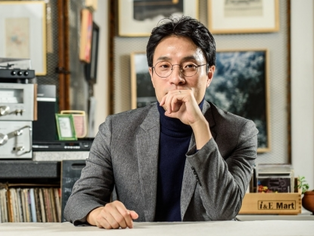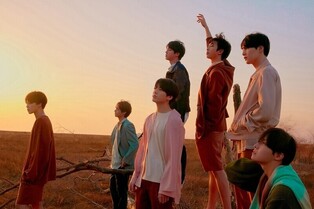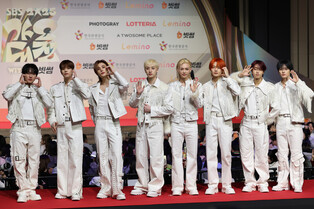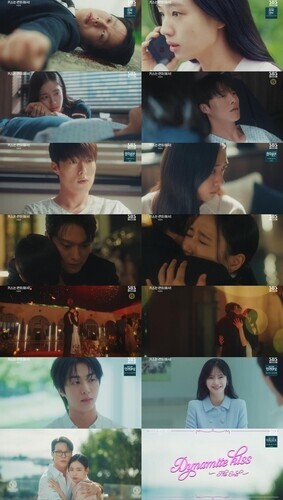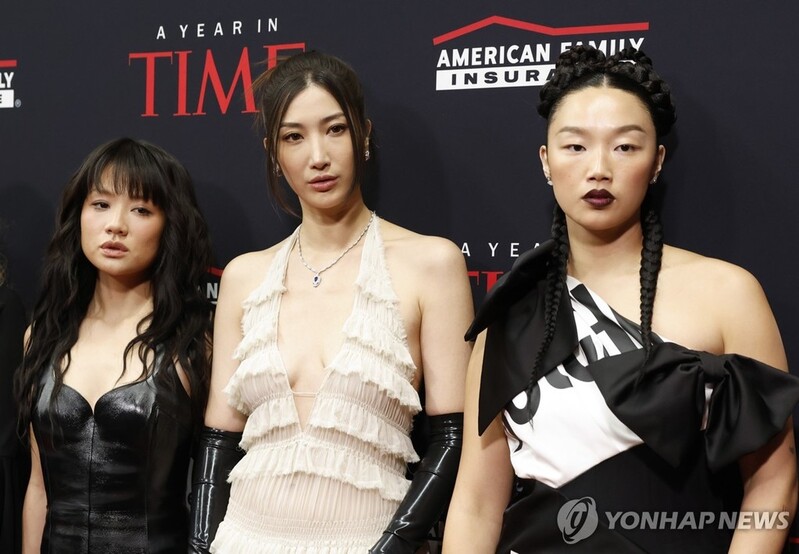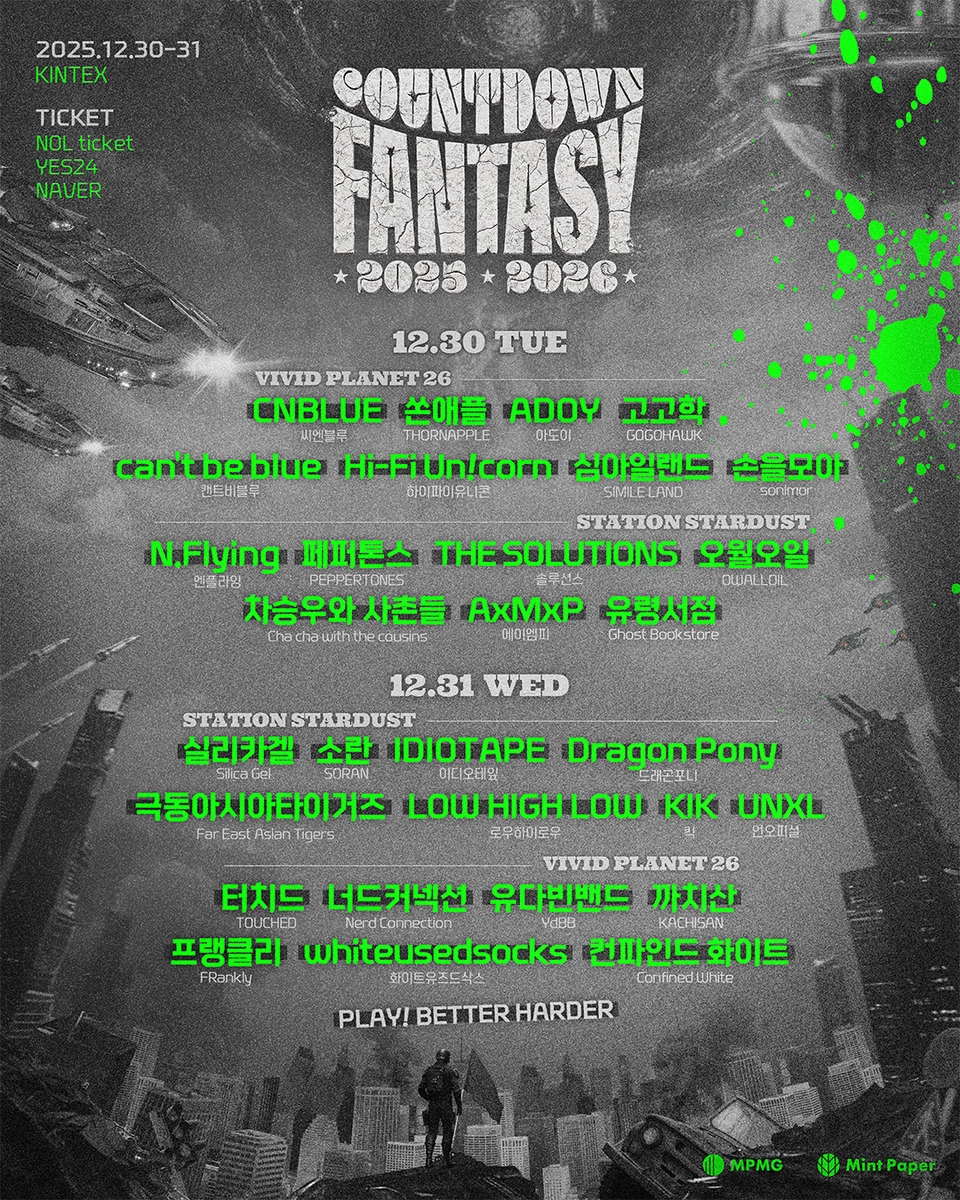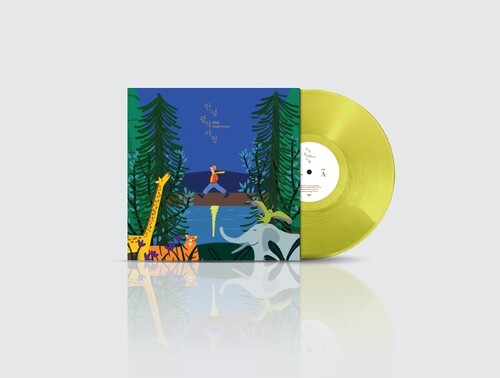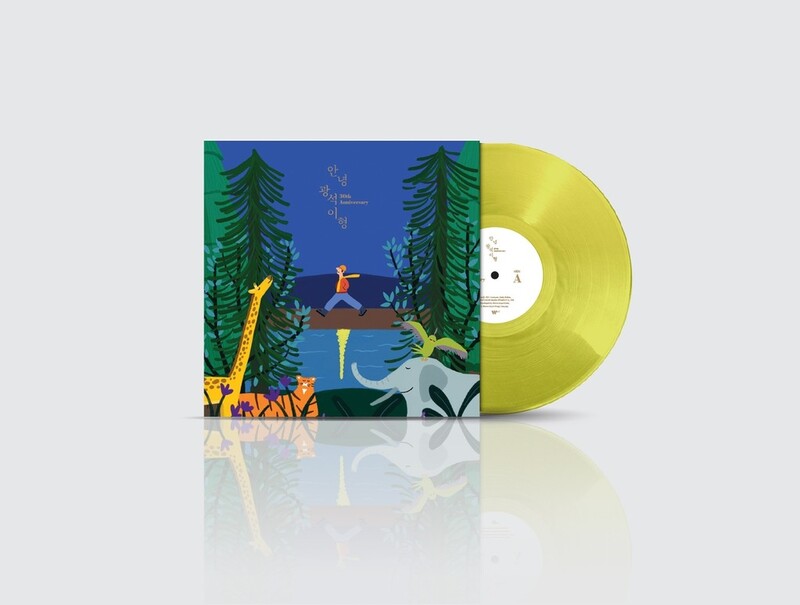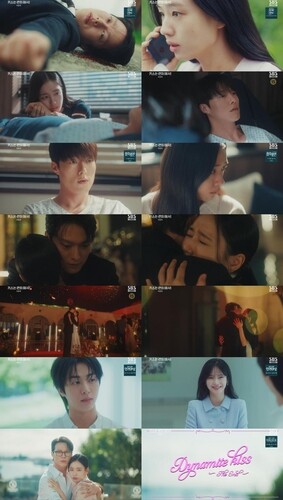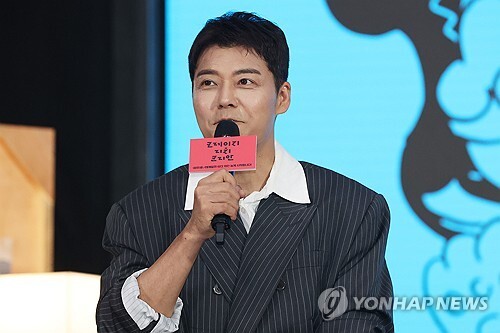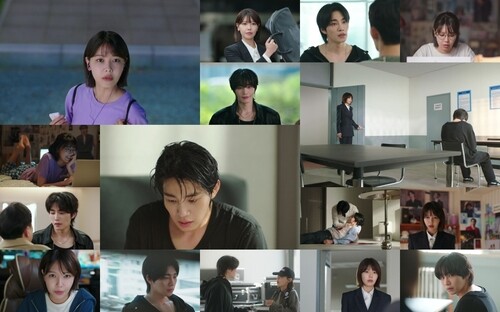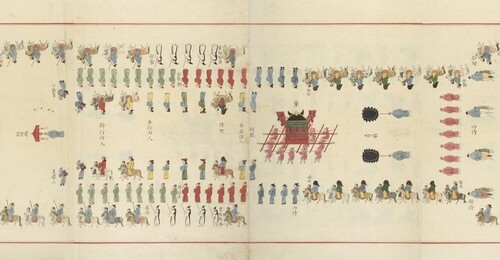 |
| ▲ Portion of the Uigwe of the Royal Wedding Ceremony for Queen Inhyeon of King Sukjong – a section of the Banchado, depicting the procession as King Sukjong escorts Queen Inhyeon back to the palace. (PHOTO NOT FOR SALE) (Yonhap) |
SEOUL, Nov. 15 (Yonhap) -- During the Joseon Dynasty, all major state and royal ceremonies were meticulously documented in a "comprehensive report" known as Uigwe (儀軌). These records served as exemplary guides for future generations to ensure that events were conducted in accordance with proper etiquette.
Among these, the Uigwe commissioned by King Jeongjo (r. 1776–1800) for storage in Oegyujanggak on Ganghwa Island were primarily reserved for royal perusal (Eoram copies) and were highly treasured alongside other key royal artifacts.
These Uigwe, looted by French forces in 1866, were returned to Korea 145 years later. Now, a dedicated space to house and showcase these invaluable records has been established at the National Museum of Korea. The newly unveiled "Oegyujanggak Uigwe Room" offers visitors an intimate glimpse into these "Books of the King."
On November 14, the National Museum of Korea announced the opening of this special exhibition space within the Calligraphy and Painting Hall on the second floor of its permanent exhibition area. This marks the first time the museum has created a dedicated space for the Uigwe. A museum official explained, “Since the return of the Uigwe in 2011, we have hosted two special exhibitions and displayed them in a small section of the Joseon gallery on the first floor. This new space allows us to better showcase the diverse content of the Uigwe to visitors.”
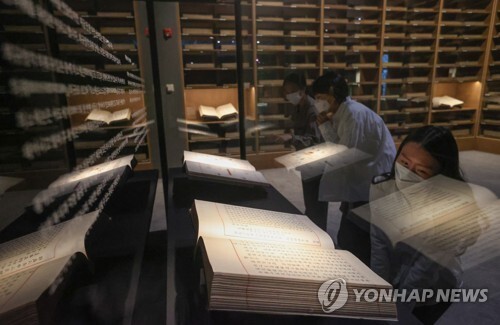 |
| ▲ Visitors explore the special exhibition "The Oegyujanggak Uigwe: The Meaning of Their Nobility" held in 2022. (Yonhap) |
Opening on November 15, the 195-square-meter (approximately 59 pyeong) exhibition room recreates the atmosphere of the original Oegyujanggak. The design incorporates traditional elements such as pillars and lattice patterns to resemble a "royal archive." Architect and educator Kim Hyun-dae of Ewha Womans University oversaw the design.
The Oegyujanggak Uigwe Room features eight volumes of Uigwe, including records documenting three royal weddings officiated by King Sukjong (r. 1674–1720) and protocols for observing three years of mourning following his death. The Jongmyo Suridogam Uigwe (宗廟修理都監儀軌), detailing the restoration of ancestral tablets at Jongmyo Shrine after the Second Manchu Invasion of Korea in 1637, is a singularly unique historical document.
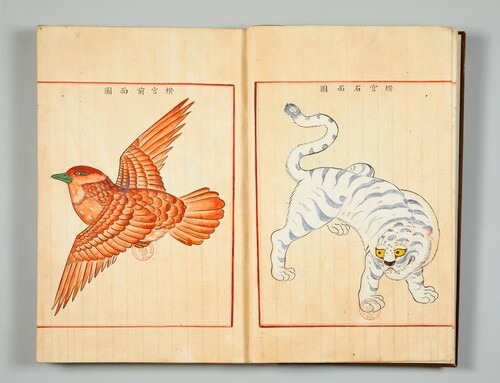 |
| ▲ This image, provided by the National Museum of Korea, shows Uigwe of the Construction Office for Queen Inwon’s Myungneung Tomb. This section features Doseol (圖說), illustrations depicting the shapes of various items. (PHOTO NOT FOR SALE) (Yonhap) |
Another notable piece is the Jangnyeol Wanghu Jonsungdogam Uigwe (莊烈王后尊崇都監儀軌), which records the process of granting a posthumous honorific title to Queen Jangnyeol in 1686. This particular Uigwe retains its original cover, offering a rare glimpse into its original state. Of the 297 Oegyujanggak Uigwe, 11 volumes preserve their original covers, while the rest were rebound with Western silk during preservation efforts by the Bibliothèque Nationale de France. The original covers, returned alongside the volumes, are now securely stored.
To ensure their preservation, the museum plans to rotate the displayed Uigwe four times a year, presenting eight volumes at a time, with a total of 32 volumes exhibited annually. The exhibition will also showcase ongoing research findings related to these documents.
Recognizing the difficulty of reading the Uigwe’s classical Chinese text and the limitations of physical access, the museum has integrated a digital feature that allows visitors to virtually flip through the pages. Additionally, explanatory materials include illustrations (doseol) of royal rituals, the efforts of historians like the late Dr. Park Byeong-seon (1923–2011), and the collaborative efforts to secure the return of the Uigwe.
The exhibition was made possible with support from the National Museum of Korea’s patron organization and its youth division, Young Friends of the Museum (YFM). Founded in 2008 by business leaders under 50, YFM fully funded the creation of the exhibition space. Song Byung-jun, chairman of Com2uS and head of YFM, stated, “We hope this space becomes a hallmark exhibition area for the National Museum of Korea, alongside the ‘Room of Quiet Contemplation’ sponsored by YFM in 2021.”
Kim Jae-hong, director of the National Museum of Korea, expressed, “This carefully curated space allows us to share the true essence of the Oegyujanggak Uigwe, a treasured cultural heritage. I hope it becomes a must-visit for youth and children alike.”
(C) Yonhap News Agency. All Rights Reserved







